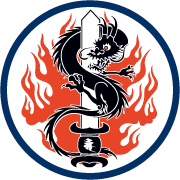The third and final instalment from the compilation of Hida’s writings in French by Kenji Tokitsu (author of Miyamoto Musashi – his life and teachings) – translated by William Stonborough.
This is how I built my method to transform my body. Every time I heard of a person who wholly invested themselves into achieving their goals, I earnestly studied their approach. How many times was I thus encouraged by another’s example, when I was almost ready to give up? I had no certainty on whether I would succeed, but it was necessary to continue regardless of the pains of failure…
When I read the translation of the novel ‘The Count of Monte Christo’ (Alexandre Dumas), I was strongly moved by the account of a prisoner who had spent seven years digging a tunnel to escape, only to realise he had been digging in the wrong direction. As he realised this, he changed direction and started digging again… It would take me ten years to obtain a body able to escape illness, and 15 until I will obtain a normal body. I will succeed, I will succeed… A prisoner does all he can to succeed within his prison – I at least, am free. How could I not try my best?
Each time I asked my father for a new book, he would buy it for me without asking questions. He was content to see me be studious.
During my abdominal and muscle-reinforcing exercises, I would fall over, hit the floor with my hands and my feet. The tatami mats in my house were ripped in several places, the supports for the floorboards became skewed, the sliding doors broken or punched through with holes. And yet, my father would never scold me. On the contrary, he seemed happy to see me this way – I, who had always been so sickly, move with such violence. Did he let me do all this through pity for a motherless child? My father, just like my older brother, always let me do whatever I wanted. Despite my frailness, it is because of their love that was able to continue on my path. Every time I think of my father, so full of affection, tears well up in my eyes…
First results
Nothing is as extraordinary as an act of will carried out with vital determination. Utmost sincerity is capable of reaching the heavens. I was able to achieve my first objective.
My state of health improved rapidly. The colour of my skin changed. My arms, thin as sticks, soon covered themselves in imposing muscles. My shoulders became square. How good I felt! My face was full of vitality, my eyes were alive, my nose and mouth full of tension and strength. Where had the sickly shadow gone? And yet, only two years had passed since I had started my exercises, even though I had imagined that obtaining a normal body would take me ten years…”
Thus, at 19 years of age (20 in H. Hida’s text), I was able to enlist in the Yamanashi Prefectural College, from which my childhood friends had already graduated a few years before. Proud of my newfound health, I made the long way to the school on foot every day. I never missed a class, nor was I ever late – regardless of the weather, sunshine, rain, snow or wind – for I was no longer the ‘reedy leaf’.
I had to get up early each morning, as I had an 8 kilometre journey to walk to the school. As soon as I would get up, I would make a series of exercises in my room, which had no light. I would then wash with cold water, have breakfast and walk to school. In winter, it would be dark by the time I walked back from school. I would go outside bare chested, in my underwear, exposed to the freezing wind coming down from Mount Fuji, and would violently go through a full series of my exercises designed to strengthen the core of the body. The exercises completely removed the fatigue in my legs. Not once did I skip doing these exercises.
Thus, my results encouraged me and I imposed violent exercise on myself every day. As a reward for my perseverance, I discovered a principle which transcends all physical activities. This discovery led me to certain conclusions about the nature of the method I should follow. During this intense practice, it sometimes happened that I would modify certain exercises after discovering their flaws. For example, whilst practising one particular exercise, my legs and hands would not follow the successive movements which I had intended and would move differently. After careful reflection, I discovered that often, the natural movements of my body were more rational than those prescribed in the exercises. It was a personal discovery, but also an illuminating epiphany – for what I obtained during this research did not limit itself to the happiness which is the result of good health. I was able to approach the subtle reason behind nature’s creation of life.
I persevered n my solitary research for more than ten years and in April 1911 (at the age of 29), at the same time as I finished my university studies, I published my first work, entitled ‘Essay on the direct method of physical strengthening’. However, I had never spoken of my research or of my project to publish to anyone – not my family or my friends. How arduous those long years had been to me, who had once been so fragile. My father and brother who had raised me with so much affection were content to see my health improve – never had they imagined that I had conducted such systematic research.
